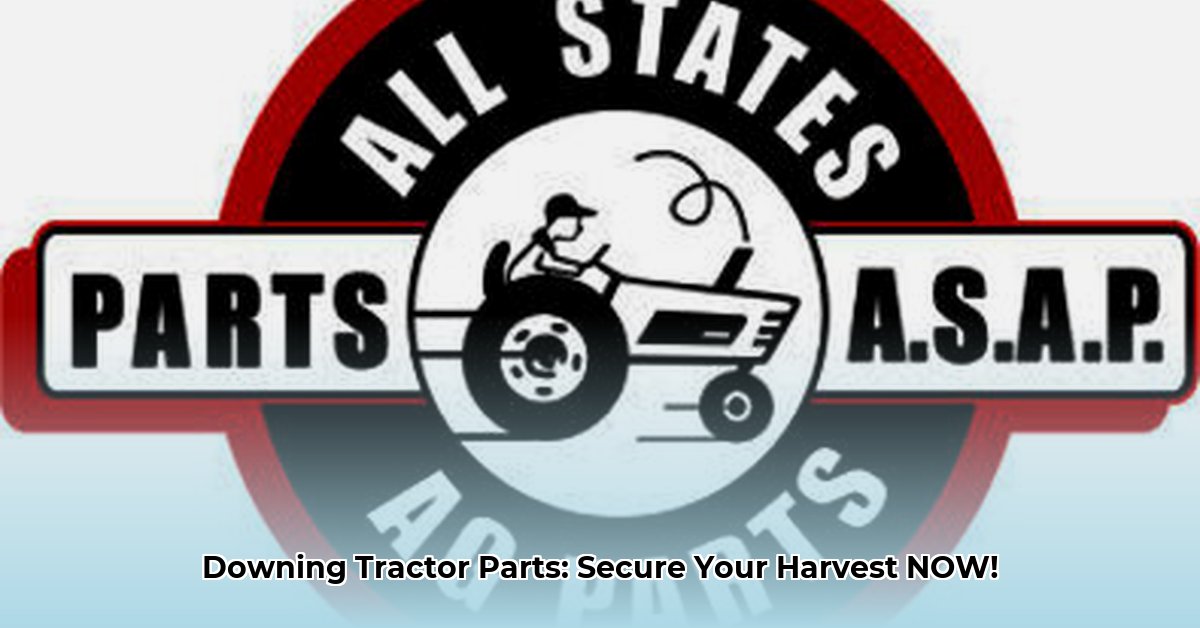
Finding reliable and affordable parts for your farm equipment is critical, especially given the challenges facing sustainable agriculture. This guide provides actionable steps for farmers, parts suppliers, and government/research institutions to navigate the complexities of the Downing Tractor Parts supply chain and ensure a secure harvest, now and for years to come. For a wider selection, check out this free parts catalog.
The Sustainable Agriculture Parts Predicament
Sustainable farming hinges on efficient equipment. However, equipment failure leads to downtime, impacting productivity and profitability. Sourcing replacement parts, particularly for older or specialized tractors, presents significant challenges. The aftermarket poses risks due to quality and longevity uncertainties. This creates a critical need for a robust and reliable parts supply chain.
Short-Term Strategies (0-1 Year): Immediate Actions
Farmers: Immediate Actions
- Diversify Suppliers: Establish relationships with multiple Downing Tractor Parts suppliers and other reputable vendors to avoid dependence on a single source. (This strategy mitigates single-source risk and ensures part availability.)
- Prioritize Preventative Maintenance: Regular equipment checks and maintenance significantly reduce the likelihood of major breakdowns and costly repairs. (Studies show preventative maintenance can reduce repair costs by up to 40%.)
- Strategic Inventory Management: Maintain a small stock of frequently used parts. Analyze failure rates and prioritize stocking parts with high replacement rates. (This minimizes downtime from unexpected failures.)
- Explore 3D Printing (with Caution): Consider 3D printing for specific parts, but carefully assess cost-effectiveness, quality, and suitability before broad adoption. (While promising, 3D-printed parts may not always be superior or cost-effective.)
Parts Suppliers: Immediate Actions
- Optimize Inventory: Prioritize stocking hard-to-find and specialized parts, particularly for older equipment, to meet anticipated demand. (This directly combats parts shortages and improves customer satisfaction.)
- Strengthen Quality Control: Enforce rigorous quality checks on all aftermarket parts to ensure reliability and meet customer expectations. (A commitment to quality builds trust and maintains a positive reputation.)
- Promote Transparency: Communicate clearly about part sourcing and manufacturing processes to foster trust and customer confidence. (Transparency fosters loyalty and minimizes potential concerns about quality and ethics.)
Government/Research Institutions: Immediate Actions
- Fund Targeted Research: Invest in research focusing on sustainable materials and advanced repair technologies to directly address the supply chain shortfall. (Research funding accelerates innovation and finds solutions for long-term sustainability).
- Support Farmer Access to Parts: Develop programs providing farmers with access to quality parts and reliable repair services, reducing barriers to obtaining necessary components. (Direct support ensures farmers can maintain operations despite parts shortages.)
Long-Term Strategies (3-5 Years): Building a Resilient System
Addressing the root causes requires long-term planning and collaboration.
Farmers: Long-Term Strategies
- Strategic Equipment Selection: When purchasing new equipment, prioritize machines with readily available parts and reputable manufacturers known for reliable after-sales support. (This proactive approach avoids future parts sourcing issues).
- Advocate for Policy Changes: Support policies promoting sustainable manufacturing, extended equipment lifespans, and improved parts availability. (Collective action drives policy change that benefits all farmers).
- Establish Collaborative Networks: Partner with other farmers to establish repair networks, sharing knowledge, resources, and potentially even parts. (Collaboration reduces reliance on individual suppliers and builds community resilience.)
Parts Suppliers: Long-Term Strategies
- Forge OEM Partnerships: Develop strategic partnerships with original equipment manufacturers (OEMs) to secure consistent parts supply and access to specialized components. (Close collaboration addresses potential supply chain vulnerabilities).
- Embrace Sustainable Practices: Adopt eco-friendly manufacturing methods, reducing environmental impact and aligning with sustainable agriculture principles. (Sustainability improves environmental responsibility and brand image.)
Government/Research Institutions: Long-Term Strategies
- Implement Sustainability Incentives: Create policies rewarding the use of sustainably produced parts and encouraging longer-lasting machinery. (Incentives drive adoption of eco-friendly practices and improve supply chain sustainability.)
- Data-Driven Supply Chain Management: Collect and share data on part availability, usage, and failure rates to improve supply chain planning and decision-making. (Data-driven approaches create more efficient and effective systems.)
Choosing Between OEM and Aftermarket Parts
This decision relies on a careful evaluation of price, availability, and dependability. While OEM parts guarantee fit and quality, they often come at a higher cost. Aftermarket parts are generally cheaper, but quality can vary. Thorough research and due diligence are essential.
Conclusion: Securing a Sustainable Future
A reliable supply of high-quality parts is crucial for the long-term sustainability of agriculture. Proactive strategies, collaboration across the supply chain, and a long-term vision are vital to building resilient and sustainable farming practices. The availability of parts directly impacts food security and environmental responsibility.